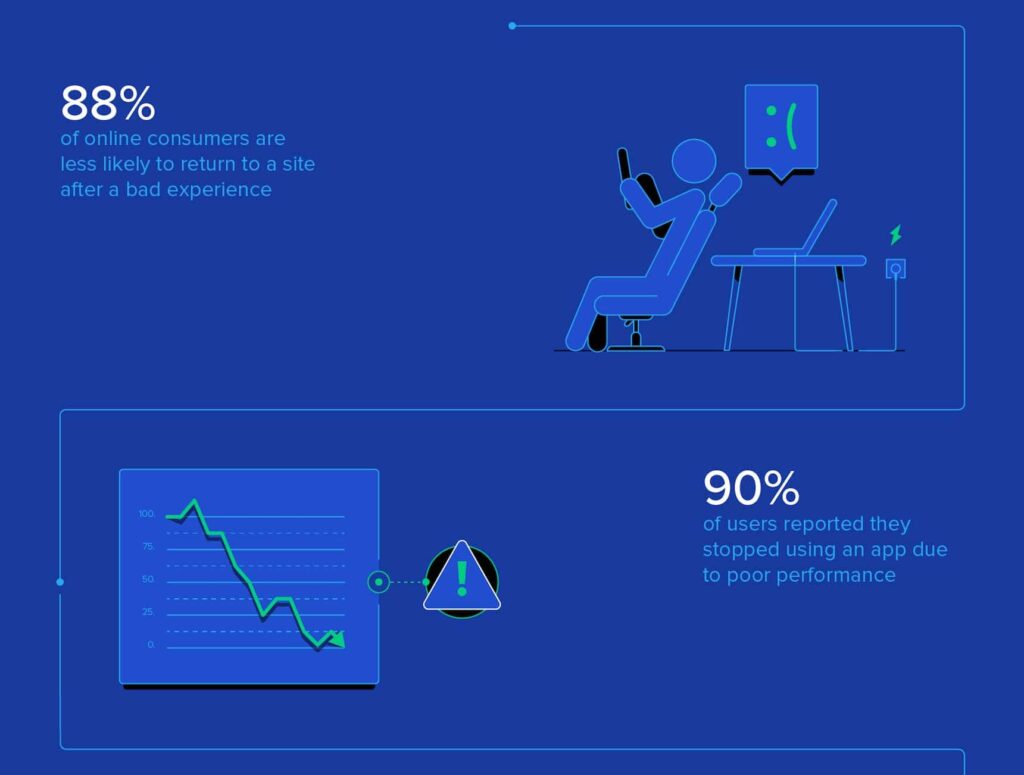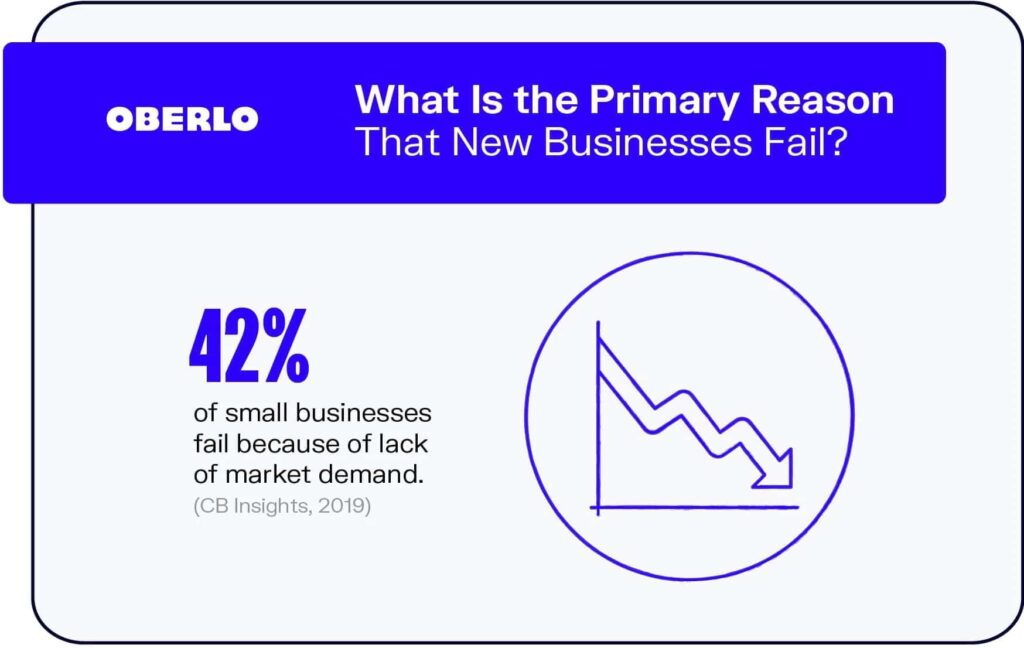Your UX strategy will literally make or break your business idea. You probably already know this, since you're here, but it wouldn't hurt to turn that phrase into a mantra.
More than 95℅ of small startups fail within their first five years of business, according to research by Convergehub. And quite a number of businesses fall into this category simply because they properly fail to take into account, a factor that is an incredibly important driver of consumer satisfaction - the user experience.

Source: Toptal
Oftentimes, whether it's starting a new business or planning a new product or idea, a lot of entrepreneurs will make their choices out of a selfish passion for that idea, and not out of an actual need to satisfy consumers.
Your user experience has to be the early most critical factor to consider when validating a new business idea. It's what will determine if that idea will end up as a money-draining personal toy, or if it will become an actually useful product that will be in demand and bring in profits.
In essence, your user experience determines if your idea lives or dies.
Okay, you get it. You will never undermine user experience again. But how do you factor it in for your new business idea?
Well, the answers are mostly all user-centric. They are focused on finding out how much consumers will need and appreciate your idea, and strategies you can take to design your product in the best way possible to satisfy users while still considering your business and some important factors.
To get to these answers, you must ask more specific questions so you can have an outlined, actionable list of steps and actions to take to accommodate UX into your business strategy. These 7 UX questions will help you validate your new business idea:
UX Strategy - Who Are Your Users?
I know, this seems pretty straightforward and basic, but you might be shocked at the amount of entrepreneurs that get so focused on their product that they fail to properly answer this single, most important question.
It's not about the product being so "cool" and "fantastic" that "it's sure to break the market", it's about knowing who the market really is.
Human beings are very diverse and complex creatures, so your thoughts and observations alone could never account for the several thousands and millions of people you're trying to create a product for.
Knowing and understanding your target audience will give you much insight into the features you need to build into your idea, or if you should even embark on it at all.
Your target audience determines your product, and not the other way round. People won't be forced into liking or needing your idea or service simply because you think it's "awesome".
Ideally, it's more success-wise when you narrow down your target market into a specific bracket. For instance, if you're trying to create an automobile software, instead of classifying your audience as " car owners", it would be better to use "car owners that are very open to software", or "car owners that make a certain salary range".
At first glance, this might seem less profit-oriented. But in practice, it's a good way to set a great foundation for your idea. Narrowing the target market means entering a smaller bracket of people that are more likely to purchase.
This way, you save the capital that you might have unnecessarily exhausted on a much larger market, you also lower your risk of failure and increase your chances of a better ROI.
So how do you know your target users? It's more than just having an idea of who they are and writing this down somewhere.
You must take the time and effort to conduct sufficient user research to better visualize and understand who is going to be using your service or product.
This might mean conducting physical research, where you spend time with people that fit your target market to discover who they are first hand, aspects of their daily lives that might cause them to need your product and give you inspiration on how to improve your idea, or simply having face-to-face interviews or interactions with them to determine this need.
Digital research and online surveys are another way to go about your user research. With the use of digital materials such as video chats, you can arrange interview sessions with members of your prospective consumer base and process the info you need from these sessions.
Web questionnaires and online surveys can be used to cover a wider number of individuals than video chats and physical research would allow you. Usually, with the latter, it's advisable to interview not less than 5 individuals but more demanding to interview higher. Online surveys allow you to cast a wider net more easily, although the data may not be as detailed, or as accurate in some cases.
User research is important. You shouldn't just rely on consumer statistics or market trends. Hear from the horse's mouth so you can know how he likes the hay. Listen to your possible users directly so you can tailor a product that suits and caters to them the most.
What Problem Will Your Product Solve for Users
This is very connected to the first question, but not interchangeable. Identifying the market you've decided to serve is different from identifying if your idea will help that market solve a problem. The answers to these questions will greatly determine the trajectory of your idea; if it needs changes, if it lives, or dies.
Again, as with understanding their market, a lot of entrepreneurs fall in love with their idea and fail to determine if there is a demand for it. This ultimately leads to failure.

Source: Oberlo
Finding out if there's a problem to be solved can be done in the process of getting to know your users, through your digital or physical interactions and interviews.
Naturally, when you came up with your idea, you would have speculated that it solved some particular problem but your user research will reveal if that speculation was valid. To validate the idea, you need to ask potential consumers specific questions as part of your research:
- State the problem to determine if it's something they're experiencing or can relate to.
- Ask how they currently solve the problem.
- Ask for their challenges to solving the problem.
- Ask how big the problem is for them and how often they encounter it.
- Ask how important it is for them to find a solution and how such will improve their lives.
Your questions might be more detailed than that, but following that formula will generate most of the answers you will be looking for.
Some of the best problems to solve are problems consumers didn't really know existed until you provided the solution. A lot of the world's popular and innovative practices were not seen as solutions to any particular problem until they came into existence.
Yes, this is a risky notion as there's the possibility of creating a fantasy product. But with sufficient user research, you will reduce the risk of creating something unrealistic.
Will Users Prefer Your Solution?
This could be a tricky part of your research and validation process because it involves trusting that people won't change their minds later on about their decisions, and if we know anything at all, it's that consumer behaviour is erratic.
By using the right strategies however, you can reduce the level of uncertainty with your information. Usually, entrepreneurs try to discover what people think about their ideas by sitting them down and describing the idea to them in detail, and how it's supposed to solve their problem. After they're done describing, they then proceed to ask their audience if they would prefer such a solution, if it solves their problems, what they think about the solution, etc.
Well, this sounds good in theory, but in practice, it's almost a different reality. People process things differently, and an abstract idea, no matter how well explained can end up looking much different than they expected in reality.
They might end up becoming so invested in your idea only to be disappointed when the actual product comes out.
If you're going to discuss solutions in the abstract with consumers at all, a plausible tactic might be to ask them to describe their own idea of a solution, or what features they imagine or desire in their own ideal solution.
This data a lot of times, might not be useful, as consumers could come up with absurd ideas. But sometimes it could, and if you're insightful enough, you could pull out useful information in terms of their underlying desires from the answers they give you. By comparing your potential users' realistic wishes with the idea you already have, you can make possible productive changes.
The best practice to avoid ending up creating something that would have only been a waste of your time and investment is prototyping.
By creating prototypes of your product and conducting usability tests with members of your audience, you can determine their immediate reactions and discover, through their complaints and comments, ways to improve the product.
Creating a product prototype will take you way less time and effort than you will need to create the actual product, but you will still be able to get a very good sense of how users will react to it.
Just to note, prototypes are different from beta versions in that betas are an almost completed version of the product, tested with the aim of making select feature changes while prototypes are, to use a simple definition, rough sketches. If a prototype testing dictates, drastic changes could be made, or the whole project could be abandoned.
Are Users Willing to Pay for Your Solution?
So people might love your idea, but that doesn't really determine that they will pay for it. In fact, you can conduct this part of your user research before your usability testing.
You need to know if people will pay for your product before you even waste time creating a prototype. After you've ascertained that it's a solution to a problem that actually exists, you should learn how badly people want to solve this problem and how many are willing to.
Interactive sessions might not generate you the data you want in this regard, as they don't account for large numbers of people and 5 to 10 people might simply not be enough to account for the collective psychology of a demographic.
A nifty strategy to use in this situation would be landing page tests. Create a few landing pages to advertise the idea or product you're trying to sell to your demographic.
The sites would of course, wouldn't lead to an actual product or service, since you don't have them ready yet. They're just tests to determine if and how many people in your target market would click the buy or purchase button for your product.
You would need website or social media ads and email marketing to direct traffic to these pages and an analytics tool to measure the success of the campaign. Needless to say, these investments would be very valuable and can be done on the cheap.
The results you generate would let you know if your idea is worth pursuing or not.
How Do You Design the Best User Experience for Your Product?
After you've determined the most important UX factor of all; an actual need for the experience, you can then continue to focus on the user by looking for the best features to provide that will avoid consumer pain points or frustration, and ultimately provide user satisfaction.
A great UX design is seamless, appealing, unique, and applies on every possible consumer touchpoint for interacting with the product or service.
This means user experience optimization is accounted for as an omnichannel strategy. It goes beyond the online and actual usage of your product, either as an app, a software, digital service, or a tangible material, you must consider every aspect of your business the user is going to deal with, before, during, and after contact with your product, either through your marketing or the purchase process.
For instance, if your product is purchased on a website or ecommerce platform, these must also have great UX design. The idea is to make sure the user perceives every aspect of the business as pleasant. This feeling would translate into a better consumer experience and generate a more positive mental environment for using the product.
Achieving a successful UX would mean going out of your way to discover UI and UX design trends. Stay on top of the market to find out the latest information and cutting-edge tools you can apply to improve and make your UX strategy easier and more realistic.
If the product is not an entirely new species or invention, draw from the existing most competitive product and use its features and demerits as baselines to improve your own.
Beta-versions are a great way to determine the best UX design. With a beta version, you can crowd-test an almost complete version of your product, and build your final version based on the comments and suggestions you receive from the users.
Because it's an almost complete version, users are able to have a very close feel of what the actual product is like, and as a result will be able to give more realistic and honest comments.
How Can Your Business Apply the UX Strategy?
Whether you will be able to take the necessary steps to achieving the best version of your agreed product depends on the nature and resources of your business.
Does your company have the team required to take on such a project? Do you have the capital? Do you have the mindset and knowledge to create and maintain the UX?
A typical team for creating a digital product can be a bit vast. There are several positions but the most recognizable and important ones can be bracketed into 4 main groups;
- Analysts conduct the user research and determine the need and features for the product. Titles in this bracket include UX Researchers, Business Analysts, and Strategists.
- Ideators are the ones that conduct usability testings and determine which ideas are valid and feasible. Titles include Service Designers, Interaction Designers, and Information Architects.
- Builders are the ones that do the actual construction of the original product. They collect all the data gathered and implement these along with defined strategies to breathe life into the idea. Their roles include User Interface Designers, Motion Designers, Front-end Developers, and Motion Designers.
- Managers walk through the entire design process and make sure the final product is complete and up to standard. They are usually titled UX Designers, Product Designers, and Product Owners.
You must make sure your team has all the personnel, knowledge, and resources needed to successfully actualize the idea. Failing to do this might mean guaranteeing a very frustrating experience, and ultimately, failure.
UX strategy - How Do You Measure User Engagement?
You must establish a set way of measuring and analyzing your success metrics. You can't actualize an idea without having a way of determining if it's working.
And in the process of trying to measure your metrics, you should avoid vanity metrics. These are metrics that don't do much for the overall success of your product. For instance, you shouldn't be bothered about how often people tap into your digital product, that's a vanity metric. What you should be focused on are the actions they take inside the product.
You should take the time to understand user behavior as it relates to the nature of your product so you can know to set realistic success metrics. You might be getting frustrated that your engagement rate is not frequent enough while your product is not something consumers generally use often.
Having conducted user research and properly identified user needs, you should be able to set relatable and strategic KPIs whose data would push you further to creating a better version of your product.
Of course, all of this means you should use and integrate an analytics tool that will keep you up to date with your conversions and engagement rates. You can’t validate an idea and not have a way of measuring its success.
Need help with UX Strategy? Feel free to reach out, we are always keen to hear about your project.

